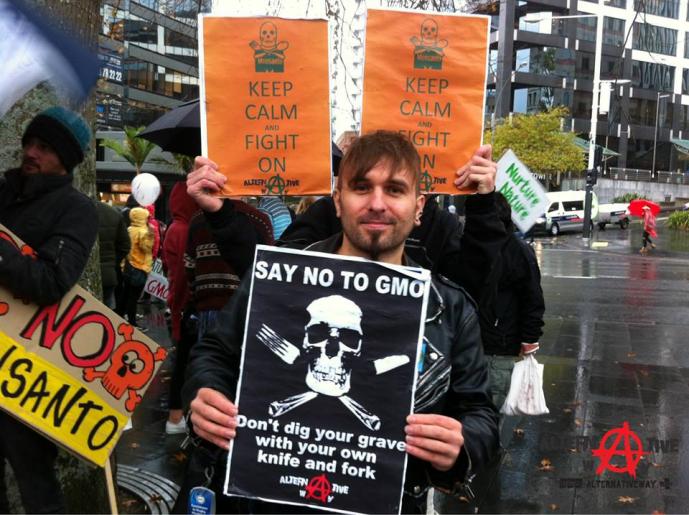Environment minister’s attack on democracy unacceptable
“The announcement by Environment Minister Amy Adams that she will legislate so that local councils cannot protect their ratepayers against the risks of genetically engineered organisms is a direct attack on democracy in this country,” says Debbie Swanwick, Spokesperson, Soil & Health – Organic NZ.
The Hazardous Substances and New Organisms Act does not protect the public against liability from any adverse consequences of GE. Local councils are responsible for communities’ environmental, social, cultural, and economic well-being. They can provide an additional layer of protection for ratepayers, such as restricting or banning the use of GMOs in the environment or requiring users to pay a bond.
“Every taxpayer in this country has already paid $8000 from their back pocket to sort out the leaky building fiasco, from which they were not protected. Central government is now suggesting they put themselves on the line again to protect corporate interests,” says Swanwick.
“Soil & Health supports the right of councils to determine their own policies on GE, in consultation with their communities. Several councils around New Zealand either have or are looking at policies to restrict the use of GMOs, in response to the concerns of ratepayers, including farmers and consumers.”
There has been discussion of a commercial GMO release next year which is pressing this issue. In poll after poll, a majority of New Zealanders have declared they do not want GE in their food or environment. A 2009 Colmar Brunton poll found that 73% of ratepayers in the region stretching from Cape Reinga to South Auckland did not want GMOs due to lack of knowledge and lack of research and information about the rising dangers of genetic engineering.
“It is unacceptable and anti-democratic for Minister Adams to say that the central government will take away the right of local governments to represent their ratepayers’ best interests. This threat to undermine local government suggests that an elite few (whether politicians or corporations) are controlling and not listening to the people,” says Swanwick.
Soil & Health is one of the oldest organic organisations in the world and advocates for the consumer’s right to have fresh, healthy, organic food and water free of GE, pesticides and additives and their right to know what is in their food and water. Oranga nuku, oranga kai, oranga tangata. To learn more about what is really in your food subscribe to their Facebook Page and subscribe http://www.facebook.com/OrganicNZ
Photo caption: Protestors at one of the many “Marches against Monsanto” held throughout NZ in May
References (Links accessed July 2013)
(1) http://www.aucklandcouncil.govt.nz/EN/newseventsculture/OurAuckland/medi…
(2) http://web.gefreenorthland.org.nz/press-releases/0043-communities-seek-s…
(3) http://www.nzherald.co.nz/nz/news/article.cfm?c_id=1&objectid=10892985
(4) http://www.oag.govt.nz/2012/annual-report/gfx/our-people
(5) http://www.scoop.co.nz/stories/AK1302/S00081/councillor-wayne-walker-on-…
(6) http://www.fndc.govt.nz/services/environmental-policy-and-forward-planni…

